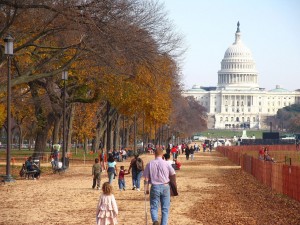From earliest stages, the project team identified primary and secondary audiences for the public history site, and then committed to measuring the effectiveness for reaching those people at all stages of the design, development, and implementation.

We decided that our primary users would be the 25 million tourists who visit the Mall each year. Included among these visitors are individual and groups of tourists who travel to Washington from across the US and the world: large numbers of middle and high school students travel to Washington, DC on school-sponsored field trip; multi-generational family groups; and veterans making pilgrimages to war memorials or commemorative events. We also identified hometown tourists, whether they are interns living in Washington DC for a short period of time, or area residents coming to the Mall to exercise, visit museums, and participate in festivals.
We further identified secondary audiences of off-site users, comprising history enthusiasts, and fellow public historians and cultural heritage professionals interested in the work we were doing. With our audiences identified, we began planning the historical content and user experience.